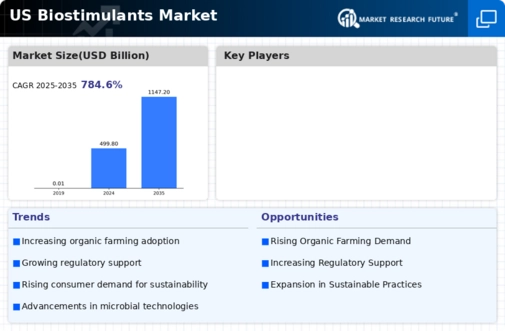US Biostimulants Market Summary
The US Biostimulants Market is poised for substantial growth, projected to reach 1147.2 USD Billion by 2035.
Key Market Trends & Highlights
US Biostimulants Market Key Trends and Highlights
- The market valuation is expected to increase from 499.8 USD Billion in 2024 to 1147.2 USD Billion by 2035.
- A compound annual growth rate (CAGR) of 7.85 percent is anticipated from 2025 to 2035.
- The growing emphasis on sustainable agricultural practices is likely to drive market expansion.
- Growing adoption of biostimulants due to increasing awareness of their benefits is a major market driver.
Market Size & Forecast
| 2024 Market Size | 499.8 (USD Billion) |
| 2035 Market Size | 1147.2 (USD Billion) |
| CAGR (2025-2035) | 7.85% |











Leave a Comment